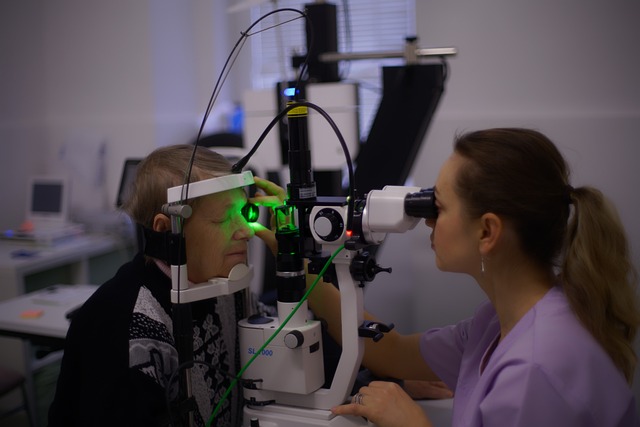If you’re in need of glasses but don’t have insurance, you may be wondering how much you can expect to pay out of pocket. The cost of glasses without insurance can vary widely depending on factors like the type of lenses, frames, and coatings you choose.
In this article, we’ll explore the cost of glasses without insurance, discussing the factors that affect the price and ways to save money on your eyewear.
Whether you’re a first-time glasses wearer or a long-time user, read on to discover everything you need to know about the cost of glasses without insurance.
Table of Contents
Factors Affecting the Cost of Glasses
Several factors can influence the price you pay for a pair of glasses. Let’s take a closer look at each of them:
Type of Glasses
The type of glasses you need plays a significant role in determining the cost. There are different categories of glasses, including single vision, bifocal, progressive, and specialty glasses.
Single vision glasses correct for either nearsightedness or farsightedness, while bifocal glasses have two different prescriptions in one lens, typically addressing both near and far vision.
Progressive glasses are similar to bifocals but offer a seamless transition between different prescription strengths. Specialty glasses, such as those for computer use or sports, may have additional features that affect the cost.
Prescription Strength
The strength of your prescription lenses can also impact the cost of your glasses. In general, the more severe your vision impairment, the higher the cost of the lenses.
Stronger prescriptions may require specialized lens materials or additional customization, which can contribute to increased expenses.
Lens Material
The material used for your lenses is another significant factor in determining the cost of your glasses. Common lens materials include plastic, polycarbonate, high-index plastic, and glass.
Plastic lenses are typically the least expensive option, while polycarbonate lenses offer increased impact resistance and are suitable for those with an active lifestyle.
High-index plastic lenses are thinner and lighter, making them more comfortable to wear, especially for individuals with stronger prescriptions. Glass lenses, although less common nowadays, can still be an option for certain prescriptions.
Frame Material
The material of your glasses frames can also affect the overall cost. Frames are available in a wide range of materials, including metal, plastic, titanium, and even wood.
Each material has its own characteristics and price point. Metal frames, such as stainless steel or titanium, tend to be more durable and lightweight but can be pricier.
Plastic frames are often more affordable but may not be as sturdy. Luxury materials like wood can come with a higher price tag due to their unique and stylish appeal.
Add-Ons
Additional features or add-ons can contribute to the final cost of your glasses. These may include anti-reflective coatings, scratch-resistant coatings, UV protection, blue light filtering, and transitions lenses that darken in sunlight.
While these features can enhance the functionality and longevity of your glasses, they may also increase the overall price.
Average Cost of Glasses without Insurance
Now that we’ve explored the factors that influence the cost of glasses, let’s delve into the average prices for different types of glasses when insurance coverage is not available.
Single Vision Glasses
Single vision glasses typically have the most affordable price range. On average, without insurance, you can expect to pay anywhere from $100 to $400 for a basic pair of single vision glasses.
The cost can vary depending on factors such as the frame material, lens material, and any additional features or brand preferences you might have.
Bifocal Glasses
Bifocal glasses, which provide two different prescription strengths in one lens, tend to be slightly more expensive than single vision glasses.
The average cost for bifocals without insurance falls within the range of $150 to $600. As with single vision glasses, the final price
will depend on various factors, including the frame and lens materials, as well as any extra coatings or features.
Progressive Glasses
Progressive glasses, also known as no-line bifocals, offer a seamless transition between different prescription strengths.
These lenses require additional customization and advanced technology, making them typically more expensive.
Without insurance, you can expect to pay around $200 to $800 for a pair of progressive glasses. The specific price will be influenced by factors such as frame and lens materials, lens design, and any add-ons you choose.
Specialty Glasses
Specialty glasses cater to specific needs, such as computer glasses or sports eyewear. The cost of specialty glasses can vary widely, depending on the complexity of the prescription and any additional features required.
Prices can range from $200 to over $1000, depending on factors such as frame material, lens material, lens design, and brand preferences.
Ways to Save Money on Glasses
While the cost of glasses without insurance can be significant, there are several ways you can save money when purchasing eyewear. Let’s explore some of these options:
Shop Around
One of the best ways to save money on glasses is to compare prices from different eyewear providers. Visit multiple optical stores or optometrists and request quotes for the frames and lenses you need.
This will allow you to make an informed decision based on the best combination of quality and price. Don’t forget to inquire about any ongoing promotions or discounts they may have.
Discount Retailers
Discount retailers specializing in eyewear can offer significant savings compared to traditional optical stores. These retailers often carry a wide range of frame styles at reduced prices.
While the selection may be more limited, you can still find quality options that fit your budget. Keep in mind that you may need to have your prescription ready when shopping at these establishments.
Online Retailers
Online retailers have become increasingly popular for purchasing glasses without insurance. They often offer competitive prices and a wide selection of frames and lenses.
Shopping online allows you to conveniently compare prices, read customer reviews, and customize your glasses from the comfort of your own home.
However, make sure to choose a reputable online retailer that offers a virtual try-on or return policy to ensure the best fit.
Buy Glasses During Sales
Many optical stores and online retailers hold regular sales and promotions, especially during holiday seasons or special occasions. Keep an eye out for these sales, as they can offer significant discounts on both frames and lenses.
By timing your purchase strategically, you may be able to save a substantial amount of money on your new glasses.
Conclusion
In conclusion, the cost of glasses without insurance can vary depending on several factors, including the type of glasses, prescription strength, lens and frame materials, and any additional features or add-ons.
Understanding these factors can help you make informed decisions and find the best value for your eyewear needs.
Single vision glasses are generally the most affordable, with an average price range of $100 to $400. Bifocal glasses, which provide two different prescription strengths, tend to be slightly more expensive, ranging from $150 to $600.
Progressive glasses, offering a seamless transition between different prescription strengths, typically fall within the price range of $200 to $800.
Specialty glasses, designed for specific needs, such as computer use or sports, can range from $200 to over $1000, depending on the complexity of the prescription and additional features required.
When it comes to saving money on glasses without insurance, there are several strategies you can employ. Shopping around and comparing prices from different providers can help you find the best deals.
Discount retailers often offer reduced prices on frames, while online retailers provide convenience and a wide selection. Taking advantage of sales and promotions can also lead to significant savings on your eyewear purchase.
Remember, the cost of glasses is not the only factor to consider. It’s important to prioritize your eye health and ensure that you’re receiving quality lenses and frames that meet your specific vision requirements.
Consult with an eye care professional to determine the best options for your needs and consider factors beyond price, such as durability, comfort, and visual clarity.
By being proactive, informed, and exploring different avenues, you can find affordable glasses that suit your style, prescription, and budget.
Prioritize your eye health and vision needs while making smart choices to save money on your eyewear purchase.







